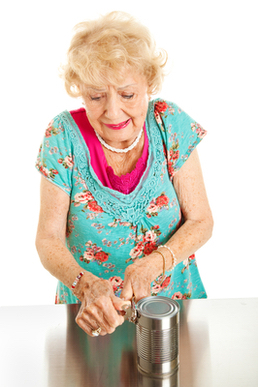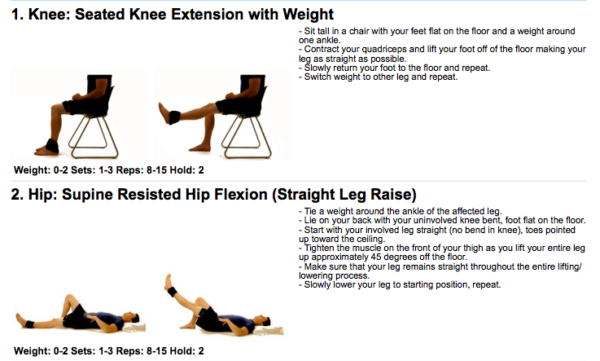
Source: Pond5
Arthritis. The word means inflamed joints. The most common type of arthritis is osteoarthritis. It’s usually caused by wear and tear on the cartilage‚ the part of the joint that provides a cushion between the ends of the bones. When you lose that cushion you’ve got bone rubbing against bone. If you’ve got arthritis, no wonder you feel stiff and your joints hurt and you can’t move like you used to.
We humans aren’t the only ones prone to arthritis. Our pets and other animals fall victim. Apparently, so did creatures that roamed the earth with dinosaurs.
According to several news reports from 2012, “Scientists found signs of a degenerative condition similar to human arthritis in the jaw of a pliosaur — an ancient sea reptile that lived 150 million years ago. The discovery marks the first time arthritis-like diseases have been found in fossilized Jurassic reptiles.”
Osteoarthritis may be common and it may be ancient, but we still don’t completely understand what causes it or the best treatment. Here are some common risk factors and treatments, courtesy of the Arthritis Foundation.
Common arthritis risk factors
- Age The older you are, the more wear and tear on your joints. Although age is an important risk factor, it doesn’t mean that osteoarthritis is inevitable.
- Obesity For every pound you gain, you add four pounds of pressure on your knees and six times the pressure on your hips. Research suggests that excess body fat produces chemicals that travel throughout the body and cause joint damage, which would mean that obesity plays a systemic, not just a mechanical, role in osteoarthritis onset.
- Injury or Overuse Athletes and people who have jobs that require doing repetitive motion, such as landscaping, typing or machine operating, are at increased risk because of injuries or stress on certain joints.
- Genetics or Heredity Genetics can play a role, especially in the hands.
- Muscle Weakness Weak muscles surrounding the knee can put you at risk. Strengthening exercises for thigh muscles may help reduce the risk.
Common arthritis treatments
- Exercise
- Weight control
- Joint protection
- Physical and occupational therapy
- Medications
- Surgery
Osteoarthritis and exercise
Because their joints feel stiff and they hurt, many people with osteoarthritis stop being active, when regular exercise might help them feel better. Julia Dunfey is a physical therapist at Coastal Rehab, a private practice based in Southern Maine that provides occupational, physical, and speech therapy services to the geriatric community. She says the biggest misconception about osteoarthritis is that people think if it hurts to move, you shouldn’t. In fact, movement is a good thing. “It helps to lubricate the joints,” says Julia. “Movement produces more synovial fluid, which lubricates joints and helps them move more smoothly. It also brings nutrients to all the structures inside the joints. Not using a joint is going to make it deteriorate even more.”
Julia says low resistance, low impact, non-weight-bearing exercises are best for people with arthritis. A combination of strengthening and stretching exercises should keep your joints strong and flexible. Research shows that lifting weights or using resistance bands not only improves muscle strength and function but can also reduce pain. Exercises that move your joints through their entire range of motion can help ease stiffness.
Good choices for exercise
- Swimming
- Water aerobics
- Bicycling
- Stationary bike (a recumbent bike is a good alternative)
- Elliptical machine
- Tai Chi
- Resistance bands
- Chair exercises
- Gym that is “senior-friendly”
Home exercise plan
 If you aren’t able to leave your home, Julia created a sample home exercise plan for you to try. The picture above demonstrates two of the exercises from the plan. Click on this link to see more exercises, including video demonstrations of how to do them.
If you aren’t able to leave your home, Julia created a sample home exercise plan for you to try. The picture above demonstrates two of the exercises from the plan. Click on this link to see more exercises, including video demonstrations of how to do them.
If you can’t do the exercises by yourself, ask a family member, friend, or caregiver to lend you a helping hand. Being active is always a lot easier and a lot more fun when you’ve got someone by your side, and it will probably benefit them as well!
Before you start your new exercise routine, it’s a good idea to get the ok from your primary care provider or arthritis specialist.


The information in your blog post is so true. I have lupus and my joints hurt quite often.My doctor told me to walk. He said it is the most natural form of exercise. It is an exercise that keeps me moving. From there I went on to yoga, because I found plain old exercise too boring. It’s taken me a long time to be able to perform certain poses, but my legs and arms feel so much better. Walking is still my favorite way to get exercise, but yoga also helps. I have degerative arthritis coupled with lupus, but I can still move quite well and I plan to do so for many years to come.
And now that the weather is nicer, you can walk outside Jo Ann. I’m glad the exercise is helpful to you. It must be so hard to deal with the ongoing pain.
Thank you for sharing ideas….